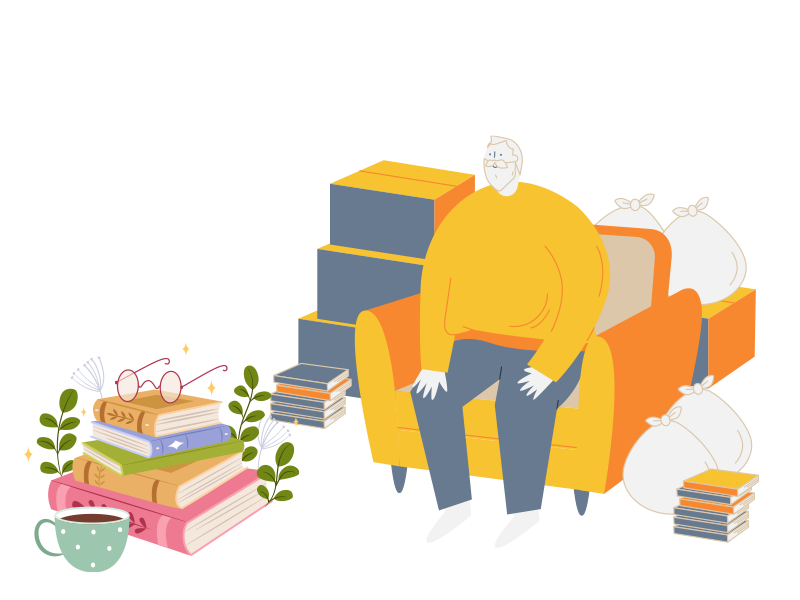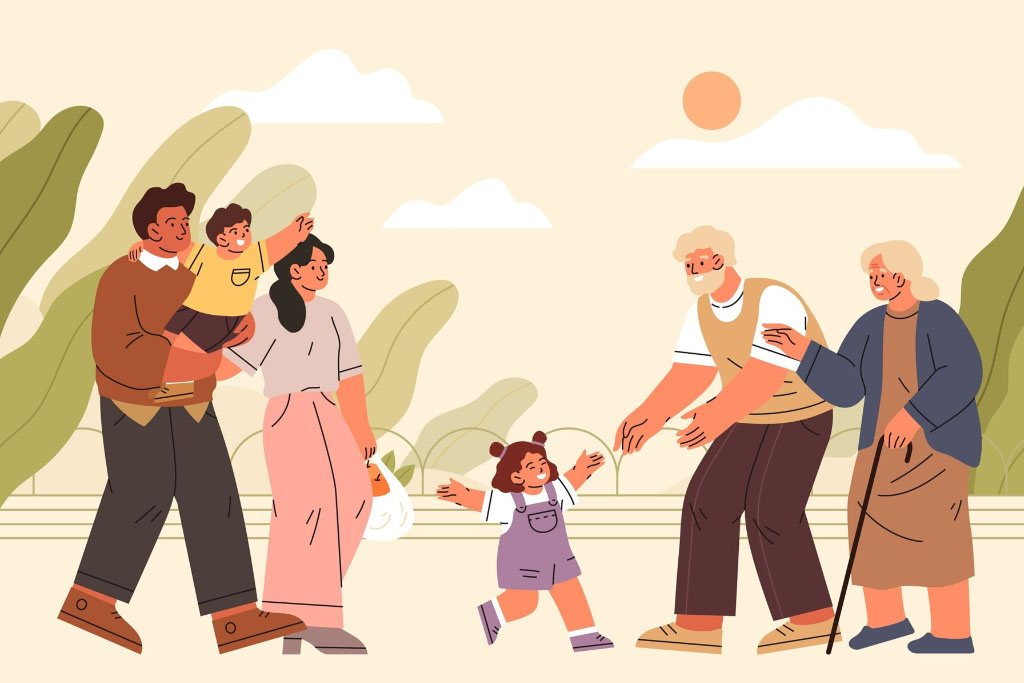5 Stages of Hoarding

Some psychological disorders are very difficult for the average individual to understand. If someone isn’t being victimized by one of these disorders, it’s hard for them to understand how certain disorders lead to certain behaviors like hoarding.
The act of hoarding is sometimes troubling to witness. It begs a couple of questions, why would anyone have so much difficulty discarding things that would be considered garbage in the eyes of others? Why do some people feel the need to accumulate large amounts of food and merchandise when using it all would be a hard thing for anyone to do?
The best way to explain a hoarding disorder is to simply provide information about the disorder. In that spirit, the following information is going to focus on the 5 stages of hoarding disorders. Hopefully, this will answer questions you might have about the progression of hoarding disorders.
11+ Years Experience dealing with Hoarding
Need someone to talk to that understands hoarding?
Get a Free Hoarding Clean-up Estimate.
Or call us today for immediate assistance.
What is Hoarding Disorder?
It’s natural to collect personally meaningful objects or to store important items in preparation for the future, but hoarding is an exaggerated form. In its mildest form it causes increasing clutter and shame. The most extreme cases lead to malnutrition, diseases, destruction of the dwelling, neighborhood pest infestation, and even death. Usually arising during teenage years, hoarding disorder occurs most often in people over 55. Persons with hoarding disorder not only feel an uncontrollable drive to amass food, pets, or objects, but they also experience crippling distress at the threat of letting any of their belongings go. This tragic mental health disorder affects activities of daily living such as housekeeping, personal hygiene, health, home maintenance, social relationships, and safety. The best way to help yourself or a loved one is to start by learning about the different levels of hoarding.
What are the 5 Stages of Hoarding?
Through research, the mental health community has identified 5 levels of hoarding that seem to offer support for a full hoarding disorder diagnosis. Here are those 5 levels of hoarding:

Level 1: Onset of Obsession to Not Dispose of Certain Items
Regarding the 5 stages of hoarding, the first level of a hoarding disorder can be rather subtle. It’s characterized by the individual starting to show signs of having a reluctance to discard things that need discarding or the desire to start accumulating merchandise for their future use. In the case of pet hoarding, the hoarder will be actively seeking more pets to bring into the home.
The effects on the home environment of the level 1 hoarder will also be subtle. It might start with a few cabinets that are filled to capacity or a stack of stuff in a corner of a room. The only ones who would notice these kinds of signs are people who are acutely familiar with the hoarder’s home environment and take notice of things starting to accumulate. It’s a warning sign that loved ones and friends should take to heart.
- Reluctance to share, donate, or discard belongings
- Growing passion in collecting, buying sale items, and storing for the future
- Keeping unneeded duplicates
- Inconsistency in usual housekeeping routines
- Filling available storage space
Level 2: The Residence Starts to Show Signs of the Hoarding
By the time a hoarding sufferer hits the second stage, the home will start to really show signs of the individual’s hoarding. The stacks of trash and merchandise will start to spill over into entryways and walkways throughout the home. There will be no sense of organization as things are likely to be strewn all over the home.
As the trash and or merchandise accumulates at this level, the hoarding sufferer will typically stop any efforts to clean or straighten up the home. Odors will set in, especially if garbage and animal excretions start to accumulate. The dirt and filth will be palpable enough that the hoarder will reject the idea of visitors coming to visit. Should visitors enter many of these homes, the signs of the hoarding will serve to alarm most reasonable individuals.
- Neglected housekeeping, increased clutter and disorganization
- One or more kitchen appliances nonfunctioning, utility issues
- One exit blocked, indoor pathways partially blocked
- Noticeable odor from garbage, dirty laundry, or pet areas
- Reluctance for guests and service people to enter
Level 3: Clutter Spreads Outside the House as Items/Trash Accumulate

At some point, the hoarding will start to spill over to the outside of the home. This is effectively the third stage of hoarding. It also provides public notice that something is not right in the home where trash is accumulating in sheds, garages, and around the yard.
Inside the home, home spaces will typically become unusable or inhabitable. Appliances in the kitchen could be broken and unusable. That could include major appliances like refrigerators, and heating and air conditioning systems. The odor around the home will become noticeable outside the home. Trash will start accumulating inside and outside the home to the point that rodents and insects come calling, often resulting in infestations.
- Outdoor areas cluttered with belongings and trash
- Blocked exits, unusable rooms, ignored breakage and spills
- Mechanical, electrical, plumbing, and ventilation problems
- Noticeable odor outside dwelling, pest infestation
- Refusal of resident to allow others to view inside or enter
Level 4: Residence Starts to Show Signs of Structural Damage
After six months to a year of hoarding behavior, the hoarder’s home often becomes subject to structural damage issues. That could include repulsive odors, mildew, broken windows and doors, water damage along the baseboards and into the walls, exposed electrical wiring that creates a fire hazard, and much more. Outside the home, the accumulation of garbage and sewage could lead to problems with the neighbors.
At this level of a hoarding disorder, the hoarding sufferer might also start showing the personal effects of their behavior. Their hygiene will suffer from unkempt clothing and body odor. This often results in the hoarding sufferer avoiding leaving the home as a means of avoiding public scrutiny. Also, there could be a noticeable change in their mental and physical health.
- Health changes, depression, anxiety, poor personal hygiene
- Pet care noticeably neglected
- Expired or rotting food, accumulated trash and fallen objects, blocked doors
- Structural damage to home from sewage backup, water, mold, and pest infestation
- Severe social isolation, refusal to accept help
Level 5: Structural Damage Becomes Severe
By far, level 5 is the most severe level. The effects of the hoarding will typically create major issues for the individual and in and around the home.
The structural damage in and around the home will typically progress to the point that the home presents environmental hazards. The rodent and insect infestation could jeopardize the entire neighborhood. Faulty wiring and clogged sewer systems could result in fires and floods. Finally, there could come a point when the home becomes uninhabitable to the point that living there could threaten the health of the people who take up residence in the home.
- Numerous unrepaired mechanical, electrical, and plumbing hazards
- No functioning utilites, clogged sewers, unliveable conditions
- Pets overcrowded, starving, diseased, and/or dead
- Overwhelming presence of pests, mold, garbage, and feces
- Resident in severe denial and emotional anguish
If you or a loved one are starting to show these 5 stages of hoarding, there are treatments available to deal with a hoarding disorder. Where Clutter Trucker can be of service is we specialize in major home cleanups and trash disposal. We would be glad to help you get your home back in order for a fresh start. Please call us to discuss our services and pricing.
Frequently Asked Questions

About Jennifer Hanzlick
Clutter Trucker is a Denver-based hoarding clean-out company founded by Jennifer Hanzlick. Jennifer leveraged 15 years of corporate experience in to start the company in 2008. Her mission is to help and educate individuals and their loved ones who have hoarding disorder. A featured speaker at Ted X Boulder, Jennifer works directly with community and non-profit organizations to boost public awareness about the condition. To that end, she founded the Colorado Hoarding Task Force in 2015.
 720-982-7856
720-982-7856







